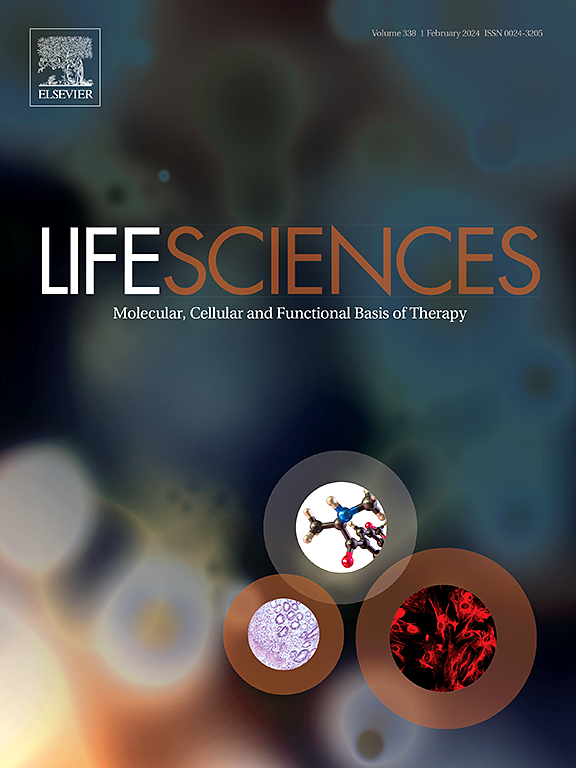Circulating CD45RA−Foxp3++ Treg cells serve as a biomarker for predicting minimal clinical manifestations status of myasthenia gravis
IF 5.2
2区 医学
Q1 MEDICINE, RESEARCH & EXPERIMENTAL
引用次数: 0
Abstract
Aims
Regulatory T cells (Tregs) are key mediators of the induction of immune tolerance; however, the mechanisms by which they regulate myasthenia gravis (MG) are not fully understood. This study aimed to explore the characteristics of Tregs and their subpopulations in the peripheral blood of patients with minimal clinical manifestations (MM) of MG and identify biomarkers that predict MM-MG for treatment guidance.
Materials and methods
The clinical data of patients with general MG who visited our hospital were retrospectively analyzed. Age- and sex-matched volunteers were selected as healthy controls (HC). Flow cytometry was used to determine the proportion, function, and subpopulations of total Tregs. A correlation analysis was conducted for subpopulation proportions and MG disease severity.
Key findings
A total of 27 cases of MM-MG, 40 cases of naїve-MG, and 33 cases of HC were included in this study. The number of total Tregs and the suppressive function of total Tregs were elevated in patients with MM-MG compared to those of patients with naїve-MG. Further analysis revealed that the frequency of CD45RA−Foxp3++ Tregs (a-Tregs) negatively correlated with quantitative myasthenia gravis (QMG) scores for patients with naїve-MG. In addition, the number of a-Tregs was significantly greater in patients with MM-MG than in patients with naїve-MG, and CD45RA−Foxp3+ Tregs expressed higher and lower levels of CTLA-4 and CXCR3, respectively.
Significance
CD45RA−Foxp3++ Tregs were significantly more abundant and highly expressed surface inhibitory molecules in patients with MM-MG. This profile may serve as a predictive biomarker for MM-MG.
循环CD45RA-Foxp3++ Treg细胞是预测重症肌无力最小临床表现状态的生物标志物。
目的:调节性T细胞(Tregs)是诱导免疫耐受的关键介质;然而,它们调节重症肌无力(MG)的机制尚未完全明了。本研究旨在探索具有极少临床表现(MM)的肌无力患者外周血中Tregs及其亚群的特征,并确定预测MM-MG的生物标志物,为治疗提供指导:回顾性分析到我院就诊的一般 MG 患者的临床数据。选取年龄和性别匹配的志愿者作为健康对照(HC)。采用流式细胞术测定总Tregs的比例、功能和亚群。对亚群比例和 MG 疾病严重程度进行了相关性分析:本研究共纳入 27 例 MM-MG、40 例 NAїve-MG 和 33 例 HC。与neїve-MG患者相比,MM-MG患者的总Tregs数量和总Tregs的抑制功能均升高。进一步分析发现,CD45RA-Foxp3++ Tregs(a-Tregs)的频率与白肌萎缩症(naїve-MG)患者的定量肌萎缩症(QMG)评分呈负相关。此外,MM-MG 患者的 a-Tregs 数量明显多于 naїve-MG 患者,CD45RA-Foxp3++ Tregs 表达的 CTLA-4 和 CXCR3 水平分别较高和较低:CD45RA-Foxp3++ Tregs在MM-MG患者中明显更多,并且高表达表面抑制性分子。这一特征可作为 MM-MG 的预测性生物标志物。
本文章由计算机程序翻译,如有差异,请以英文原文为准。
求助全文
约1分钟内获得全文
求助全文
来源期刊

Life sciences
医学-药学
CiteScore
12.20
自引率
1.60%
发文量
841
审稿时长
6 months
期刊介绍:
Life Sciences is an international journal publishing articles that emphasize the molecular, cellular, and functional basis of therapy. The journal emphasizes the understanding of mechanism that is relevant to all aspects of human disease and translation to patients. All articles are rigorously reviewed.
The Journal favors publication of full-length papers where modern scientific technologies are used to explain molecular, cellular and physiological mechanisms. Articles that merely report observations are rarely accepted. Recommendations from the Declaration of Helsinki or NIH guidelines for care and use of laboratory animals must be adhered to. Articles should be written at a level accessible to readers who are non-specialists in the topic of the article themselves, but who are interested in the research. The Journal welcomes reviews on topics of wide interest to investigators in the life sciences. We particularly encourage submission of brief, focused reviews containing high-quality artwork and require the use of mechanistic summary diagrams.
 求助内容:
求助内容: 应助结果提醒方式:
应助结果提醒方式:


